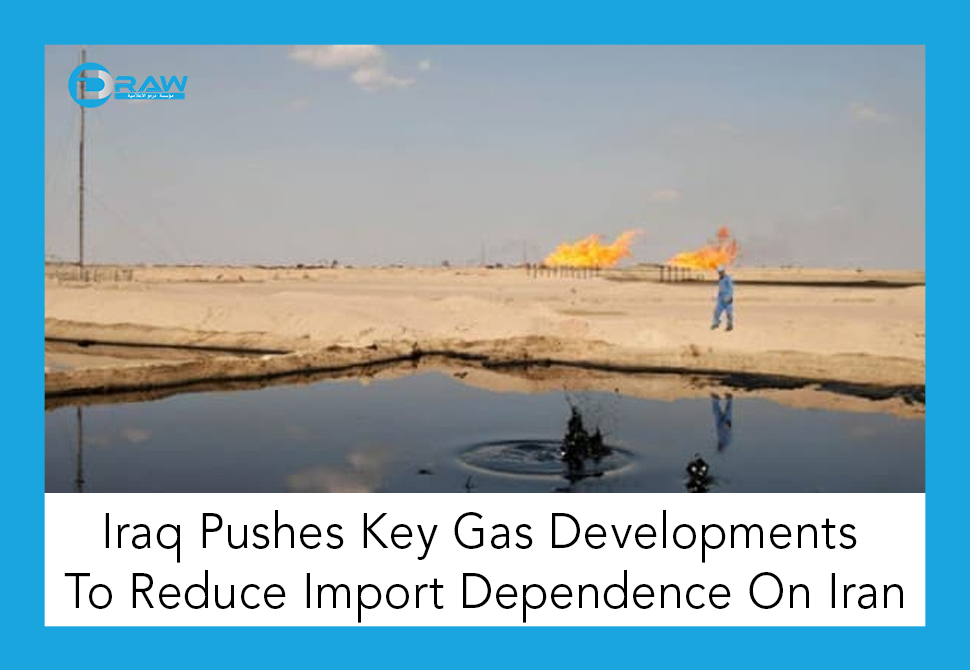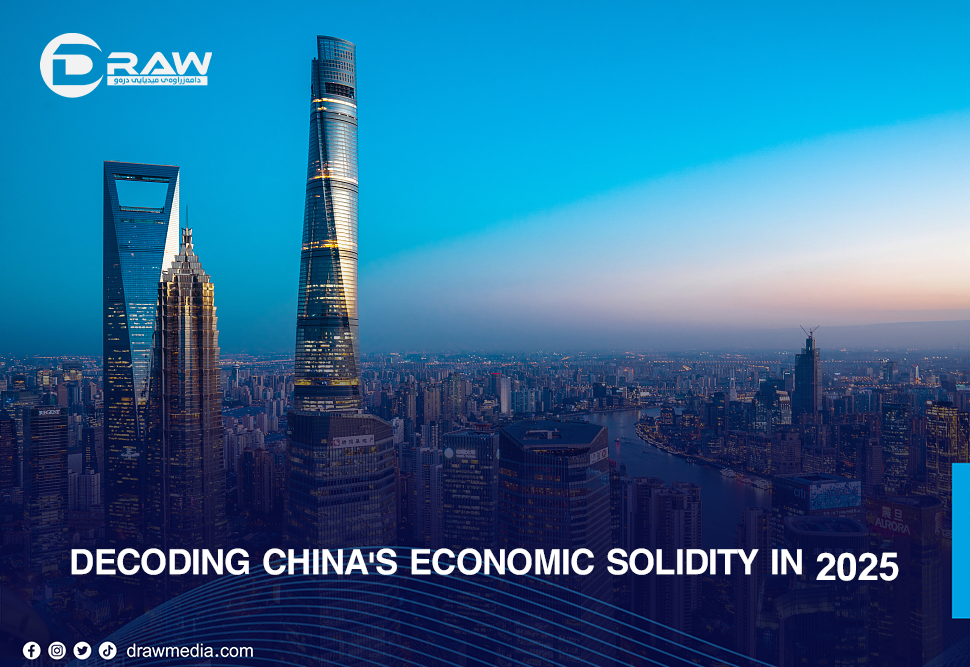Iraq Pushes Key Gas Developments To Reduce Import Dependence On Iran

2022-10-17 19:20:52
With Russia having lost much of its ability to function as a state sponsor of Iraq, Baghdad is looking again to the U.S. for support. Top of Washington’s concerns in this regard for many years has been Iraq’s extremely close political, religious, economic, and military ties with neighbouring Iran, and the focus of this for the White House has been Baghdad’s dependence on gas and electricity supplies from Tehran. Last week saw Iraq’s state-owned Dhi Qar Oil Company (DQOC) sign a contract with the U.S. oilfield services giant, Baker Hughes, to increase the production of associated (with oilfield development) gas at the potentially huge Gharraf and Nassiriya oilfields in Dhi Qar Province. According to a comment from DQOC director, Anwar Hadi Shiaa, the new venture aims to increase gas production from the sites from 20 million standard cubic feet (mmscf) to 200 mmscf in the first phase of development. For seasoned Iraq-watchers, though, we have all been here before many times. Every year since 2018, when the U.S. unilaterally withdrew from the Joint Comprehensive Plan of Action (JCPOA, or, colloquially, the ‘nuclear deal’) with Iran, and before 2015 when the JCPOA was agreed, the same pattern has played itself out between Washington and Baghdad. Specifically, every year Baghdad continues to import the same amount – around 30 percent to 40 percent – of its gas and electricity needs from Iran for months at a time, disregarding pleas from the U.S. to stop doing it. Every year, there is a cash crisis in Iraq caused by a failure to be able to meet the needs of its huge civil payment’s obligations, whereupon whoever is prime minister at the time goes cap in hand to Washington to beg for money. Every year, Washington agrees to bail out Baghdad on the proviso that Iraq cuts the amount of gas and electricity it imports from Iran, and Iraq solemnly agrees to do so. But every year, once the money from Washington has been dispersed, Iraq goes back to importing exactly the same amount of gas and electricity from Iran that it was doing before, which it is permitted to do through waivers granted for that purpose by Washington. And so, it goes on.
For a brief moment or two, it was thought by those with little or no knowledge of how Iraq actually works that Baghdad signing up to the United Nations and World Bank ‘Zero Routine Flaring’ initiative - aimed at ending by 2030 the routine flaring of gas produced during the drilling of oil - might be an added incentive to Iraq taking real action on the issue. At the time, Iraq flared the second largest quantity of gas in the world (after Russia) – some 17.37 billion cubic metres (bcm) – but such hopes proved forlorn. So too were hopes that Iraq might realise the folly of simply burning off the huge amount of gas that resulted from its extensive oil drilling operations, which equates to setting fire to billions of dollars every year in lost export revenues, even when world gas prices were low. Equally, it did not matter to some of those at the top of the Iraqi oil and gas sector that even if not exported, the gas saved from being burned off could go towards power production in Iraq itself, not just avoiding frequent blackouts across the country every year but also to fuel growth in other sectors of its economy. The fact that Iraq suffers from any blackouts at all is indictment enough of failure, given that it has the fifth largest crude oil reserves on the world (at least 145 billion barrels) and the twelfth largest gas reserves in the world (nearly 131 trillion cubic feet).
Various announcements in 2020 provided some cause for vague optimism that this deleterious situation may change at some point, although to seasoned Iraq watchers the announcements all look very familiar. One notable example was the statement from the Japan Petroleum Exploration Company (Japex) that it, along with Malaysia’s Petronas and Iraqi national oil firm, North Oil, had reached an agreement on the further development of the Gharraf oil field that would see crude oil production increase from then-90,000 barrels per day (bpd) to its targeted plateau production of 230,000 bpd in the next phase. On the same day, two years ago, in 2020, Iraq’s Oil Ministry announced that it had signed a natural gas capture deal with - Baker Hughes - to harness exactly the same amount of associated gas from the Gharraf and Nassiriya fields as it just announced again last week. Moreover, it is exactly the same deal with Baker Hughes that the Oil Ministry announced as well in 2018. Shortly after these identical deals had been announced at around the same time in both of those years, whoever was prime minister of Iraq at the time went to Washington to ask for money.
The fact remains that the potential for gas capture in Iraq, including on these two fields – Gharraf and Nassiriya – is huge and there are many companies who want to do the projects for Iraq, including Baker Hughes. The original 2018 and then 2020 deals were exactly the same and this latest deal announced is unlikely to be any different. The first stage of the Nassiriya plan, which would be similar to that for Gharraf, would likely involve an advanced modular gas processing solution being deployed at the Integrated Natural Gas Complex in Nassiriya to dehydrate and compress flare gas to generate over 100 mmscf/d of gas. The second stage would involve the Nassiriya plant being expanded to become a complete natural gas liquid (NGL) facility that will recover 200 mmscf/d of dry gas, liquefied gas and condensate. All this output would go to the domestic power generation sector, with Baker Hughes stating previously in 2018 and 2020 that addressing the flared gas from these two fields would allow for the provision of 400 megawatts of power to the Iraqi grid. The project, if Baker Hughes was allowed to just get on with it, would take around 30 months to be implemented. Similar development plans could then be rolled out for other major gas capture sites, which back in 2018 and 2020 included Halfaya (300 mmscf/d), and Ratawi (400 mmscf/d) in the first instance.
Synergies could then be developed with the only major gas project that has made significant progress in Iraq over the years, the Basra Gas Company (BGC) project, orchestrated by British oil and gas giant, Shell, which owns a 44 percent stake in venture. The BGC was designed specifically to enable Iraq to increase its energy independence and to achieve economic diversification by capturing currently flared gas from the fields of Rumaila, West Qurna 1, and Zubair, in the first phase. By 2019/2020, the BGC had reached a peak production rate of 1035 mmscf/d, the highest in Iraq’s history and sufficient gas to generate approximately 3.5 gigawatts of electricity – enough to power three million homes. The BGC is also responsible for currently supplying around 70 percent of Iraq’s liquefied petroleum gas (LPG) and for enhancing Iraq’s export capabilities, which helped the country to become a net exporter of LPG from 2017. Back in June this year, BGC exported its first semi-refrigerated liquefied petroleum gas shipment, from the BGC Umm Qasr jetty. as part of plans to boost the country’s LPG exports.
Shell’s efforts in the BGC were intended to be a foundation stone for the build-out of Iraq’s value-added petrochemicals sector, specifically, to begin with, the Nebras petrochemicals plant project that began in earnest on 2013. The original design plans for Nebras – formulated between Shell and the Iraq Oil Ministry and Ministry of Industry and Minerals – were for a project that could produce at least 1.8 million metric tonnes per year (mtpy) of various petrochemicals. This would make it Iraq’s first major petrochemicals project since the early 1990s and one of only four major petchems complexes across the entire country, with the others being Khor al-Zubair in the south, Musayeb near Baghdad and the Baiji refinery complex in the north. Shell’s titanic efforts to get BGC volumes up to over 1 billion scf/d means that the ethane can be extracted on a sustainable and reliable basis, and that allows for sufficient volume for a major petrochemicals plant to be viable. Ethane needs to be the initial feedstock for Iraq’s first few plants in the same way that it was in the development of Saudi Arabia’s master gas system that captured associated gas, which was then fractionated and supplied as primary feedstock to the flagship Jubail Industrial City.
By Simon Watkins for Oilprice.com


.jpg)

.jpg)


.jpg)

.jpg)
.jpg)